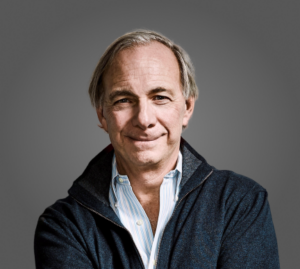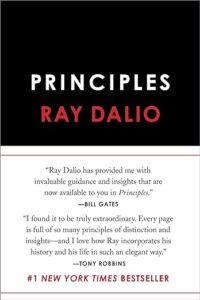Ray Dalio: “Principles: Life and Work”, (2017), Simon & Schuster (LINK)
CONTENTS:
PART I
WHERE I’M COMING FROM
1 My Call to Adventure: 1949–1967
2 Crossing the Threshold: 1967–1979
3 My Abyss: 1979–1982
4 My Road of Trials: 1983–1994
5 The Ultimate Boon: 1995–2010
6 Returning the Boon: 2011–2015
7 My Last Year and My Greatest Challenge: 2016–2017
8 Looking Back from a Higher Level
PART II
LIFE PRINCIPLES
1 Embrace Reality and Deal with It
2 Use the 5-Step Process to Get What You Want Out of Life
3 Be Radically Open-Minded
4 Understand That People Are Wired Very Differently
5 Learn How to Make Decisions Effectively
Life Principles: Putting It All Together
Summary and Table of Life Principles
PART III
WORK PRINCIPLES
Summary and Table of Work Principles
TO GET THE CULTURE RIGHT . . .
1 Trust in Radical Truth and Radical Transparency
2 Cultivate Meaningful Work and Meaningful Relationships
3 Create a Culture in Which It Is Okay to Make Mistakes and Unacceptable Not to Learn from Them
4 Get and Stay in Sync
5 Believability Weight Your Decision Making
6 Recognize How to Get Beyond Disagreements
TO GET THE PEOPLE RIGHT . . .
7 Remember That the WHO Is More Important than the WHAT
8 Hire Right, Because the Penalties for Hiring Wrong Are Huge
9 Constantly Train, Test, Evaluate, and Sort People
TO BUILD AND EVOLVE YOUR MACHINE . . .
10 Manage as Someone Operating a Machine to Achieve a Goal
11 Perceive and Don’t Tolerate Problems
12 Diagnose Problems to Get at Their Root Causes
13 Design Improvements to Your Machine to Get Around Your Problems
14 Do What You Set Out to Do
15 Use Tools and Protocols to Shape How Work Is Done
16 And for Heaven’s Sake, Don’t Overlook Governance!
Work Principles: Putting It All Together
ACKNOWLEDGMENTS
ABOUT THE AUTHOR
CONCLUSION
APPENDIX: TOOLS AND PROTOCOLS FOR BRIDGEWATER’S IDEA
MERITOCRACY
BIBLIOGRAPHY
INDEX
ABOUT THE AUTHOR

Ray Dalio, who grew up a very ordinary middle-class kid from Long Island,
started the investment company Bridgewater Associates out of his two-bedroom
apartment when he was 26 years old, and built it over the next 42
years into what Fortune magazine assessed to be the fifth most important
private company in the U.S. He did that by creating a unique culture—an idea
meritocracy based on radical truth, radical transparency, and believability weighted
decision making—that he believes most people and organizations
can use to better achieve their own goals.
Along the way, Dalio became one of the 100 most influential (according
to Time) and 100 wealthiest (according to Forbes) people in the world, and
because his unique investment principles changed the industry, CIO
magazine called him “the Steve Jobs of investing.” (Those principles will be
conveyed in his next book, Economic and Investment Principles.) He
believes that his success isn’t due to anything special about him—it is the
result of principles he learned, largely by making mistakes, from which he
also believes most people can benefit.
At 68 years old, Dalio’s primary objective is to pass along these principles
in case others find them of value.
 (LINK)
(LINK)